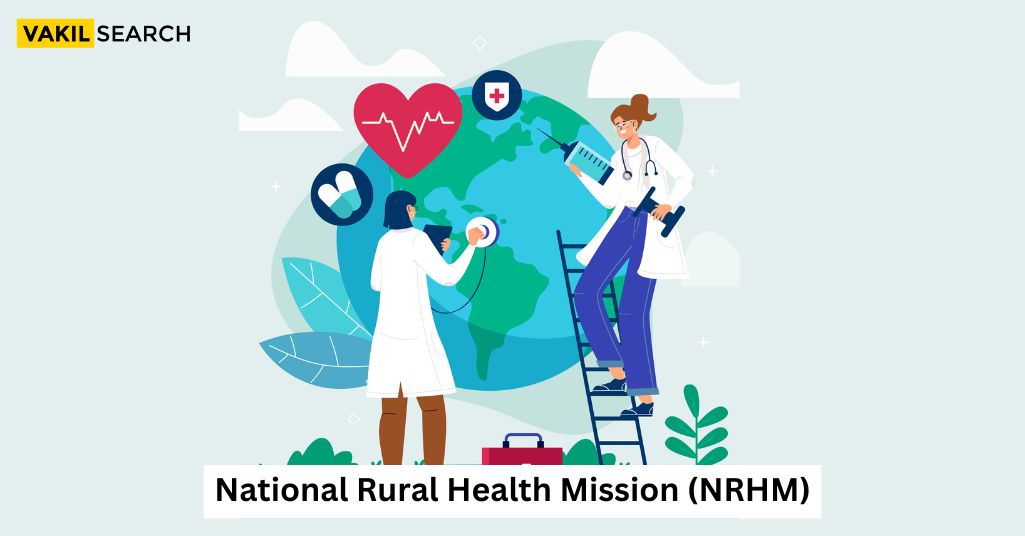National Rural Health Mission (NRHM) aims to improve healthcare in rural India, focusing on accessibility, quality, and inclusivity.
The National Rural Health Mission (NRHM) is a flagship government program in India that aims to provide accessible, affordable, and quality healthcare to the rural population, especially vulnerable groups. Launched in 2005, the NRHM has made significant strides in improving rural healthcare in India.
Roles and Objectives of National Rural Health Mission:
- Improve Infrastructure: Enhance healthcare infrastructure in rural areas by building and upgrading Primary Health Centers (PHCs), Community Health Centers (CHCs), and sub-centers.
- Human Resource Development: Strengthen the healthcare workforce by recruiting and training health professionals, including doctors, nurses, and paramedical staff, especially in underserved areas.
- Community Engagement: Promote community participation and decentralized healthcare planning to ensure that healthcare services are tailored to local needs.
- Maternal and Child Health: Focus on reducing maternal and child mortality rates through various interventions, including prenatal care, institutional deliveries, and immunization programs.
- Disease Control: Implement disease control programs for communicable and non-communicable diseases, with a particular emphasis on diseases prevalent in rural areas.
- Health Information System: Establish and strengthen health information systems for better planning, monitoring, and evaluation of health programs.
- Access to Essential Drugs: Ensure the availability of essential drugs and medicines at all healthcare facilities in rural areas.
- Nutrition Support: Integrate nutrition programs to address malnutrition issues, especially among women and children.
- Public-Private Partnerships: Foster collaborations with the private sector to improve healthcare delivery in rural areas.
Benefits of National Rural Health Mission Scheme:
- Improved Healthcare Access: Enhances access to quality healthcare services in rural and remote areas, reducing the healthcare disparity between urban and rural populations.
- Reduction in Maternal and Child Mortality: Focus on maternal and child health leads to a decline in maternal and child mortality rates through targeted interventions.
- Enhanced Healthcare Infrastructure: Upgrades and builds new healthcare facilities, providing a better environment for healthcare delivery.
- Strengthened Healthcare Workforce: Recruitment and training of healthcare professionals contribute to a more skilled and equipped healthcare workforce.
- Community Empowerment: Involves local communities in healthcare decision-making, leading to better acceptance and effectiveness of health programs.
Important Features of National Rural Health Mission Scheme:
- Financial Assistance: Provides financial support to states for the implementation of health programs in rural areas.
- Flexible Financing: Adopts a flexible financing mechanism to allow states to use funds based on local needs and priorities.
- Incentives for Health Workers: Offers incentives and support to healthcare workers posted in rural and remote areas to address workforce shortages.
- Focus on Women and Children: Prioritizes maternal and child health, with specific interventions aimed at improving their health outcomes.
- Capacity Building: Emphasizes the training and capacity building of healthcare professionals to enhance their skills and knowledge.
- Monitoring and Evaluation: Implements robust monitoring and evaluation mechanisms to assess the impact of interventions and improve program efficiency.
Eligibility for National Rural Health Mission Scheme:
The National Rural Health Mission (NRHM) or the National Health Mission (NHM) in India primarily focuses on providing healthcare services in rural and underserved areas. While individuals themselves may not register for the scheme, eligibility criteria usually pertain to the states, districts, and healthcare facilities. Here are some key aspects of eligibility:
- Geographical Eligibility: The NRHM targets rural and remote areas, and eligibility is often determined based on the need for improved healthcare infrastructure and services in these regions.
- Healthcare Facility Eligibility: Healthcare facilities in rural areas, such as Primary Health Centers (PHCs), Community Health Centers (CHCs), and sub-centers, are eligible to receive support and resources under the scheme.
- State and District Eligibility: The scheme operates at the state and district levels, and eligibility is determined by the need for healthcare interventions in specific regions. States with higher healthcare challenges and resource constraints often receive more support.
- Population Criteria: The density of the rural population and the prevalence of health challenges play a role in determining eligibility for the NRHM. Areas with higher populations and poorer health indicators are often given priority.
It’s important to note that individuals themselves do not register for the NRHM scheme. The implementation and execution of the program occur at the administrative level through government health departments.
How to Register for National Rural Health Mission Scheme:
As mentioned earlier, individuals do not register for the National Rural Health Mission (NRHM) scheme. The registration and implementation processes are primarily at the administrative and governmental levels. However, if you are a healthcare facility or professional in a rural area seeking to benefit from the NRHM, the following steps may be involved:
- Health Facility Registration: Ensure that the healthcare facility, such as a Primary Health Center (PHC) or Community Health Center (CHC), is registered with the relevant health department of the state government.
- Alignment with State Health Policies: Align the operations and initiatives of the healthcare facility with the health policies and priorities outlined by the state health department.
- Participation in Programs: Actively participate in the health programs and initiatives launched under the NRHM, focusing on areas such as maternal and child health, disease control, and infrastructure development.
- Compliance with Guidelines: Adhere to the guidelines and regulations set by the state health department for the implementation of NRHM schemes.
- Reporting and Monitoring: Provide regular reports on the progress and outcomes of the implemented programs, as monitoring and evaluation are integral components of the NRHM.
For individuals seeking healthcare services in rural areas, the NRHM aims to improve access to quality healthcare, and beneficiaries usually receive services through registered healthcare facilities.
FAQ’s:
Who launched the NRHM scheme?
The National Rural Health Mission (NRHM) was launched by the Government of India. It was introduced in 2005 under the stewardship of the Ministry of Health and Family Welfare, which is responsible for the formulation and implementation of health policies and programs in the country.
Why was the National Health Mission launched?
The National Health Mission (NHM), which includes the NRHM, was launched to address the healthcare challenges faced by rural and underserved populations in India. The mission aims to improve the accessibility, availability, and quality of healthcare services, with a particular focus on maternal and child health, disease control, and strengthening healthcare infrastructure in rural areas.
What is the toll-free number for the National Health Mission?
As of my last knowledge update in January 2022, I don't have specific information on a toll-free number for the National Health Mission. Toll-free numbers can change over time, and it's recommended to check the official website of the Ministry of Health and Family Welfare or the National Health Mission for the most up-to-date contact information.
Which ministry supervises the NRHM scheme?
The National Rural Health Mission (NRHM), now part of the National Health Mission (NHM), is supervised by the Ministry of Health and Family Welfare in India. This ministry is responsible for formulating health policies, planning and implementing health programs, and overseeing healthcare delivery across the country.
Conclusion:
The National Rural Health Mission (NRHM) has played a crucial role in addressing healthcare challenges in rural India. By focusing on infrastructure development, human resource capacity building, and community engagement, the NRHM aims to enhance healthcare accessibility and outcomes in underserved areas. While individuals do not register for the scheme, the eligibility and registration processes primarily involve healthcare facilities and administrative entities at the state and district levels. The success of the NRHM depends on collaborative efforts, effective implementation, and sustained commitment to improving healthcare in rural communities.
Other Related Topics:










